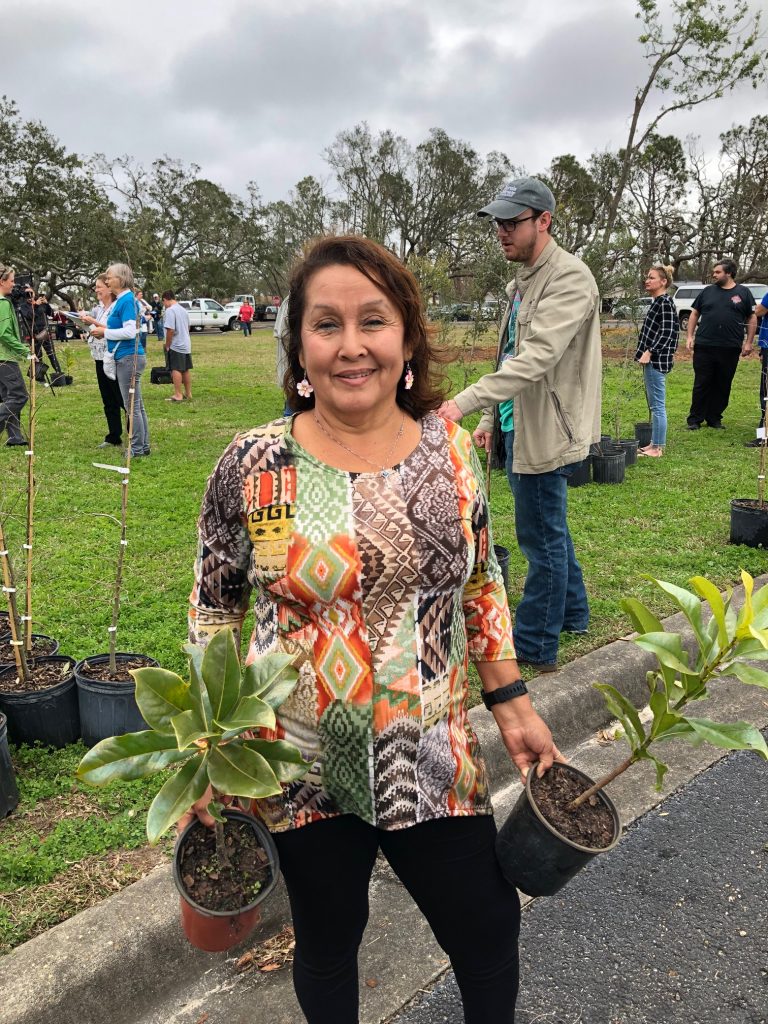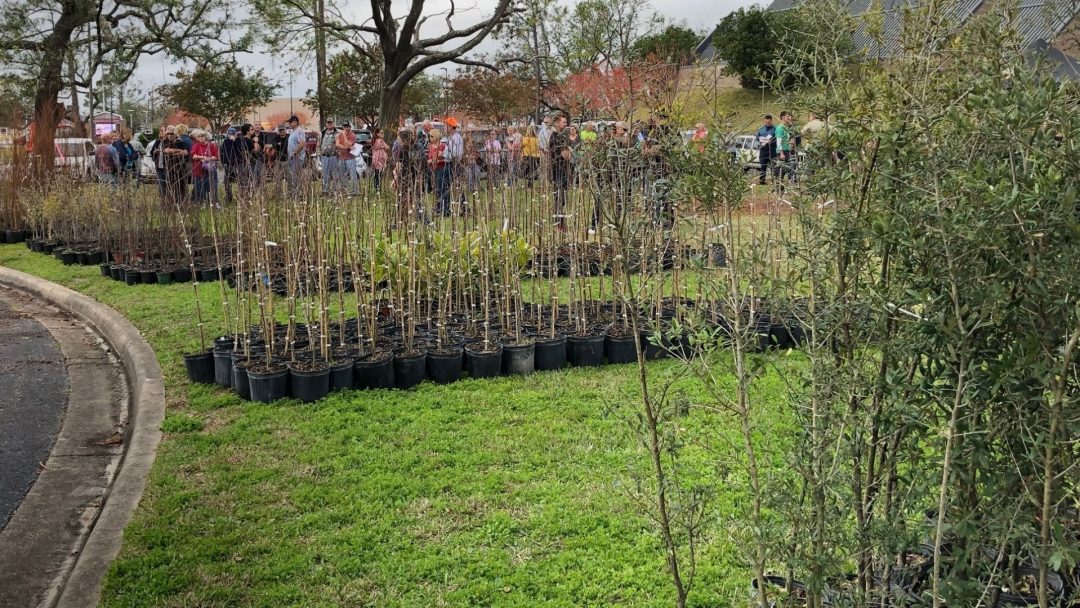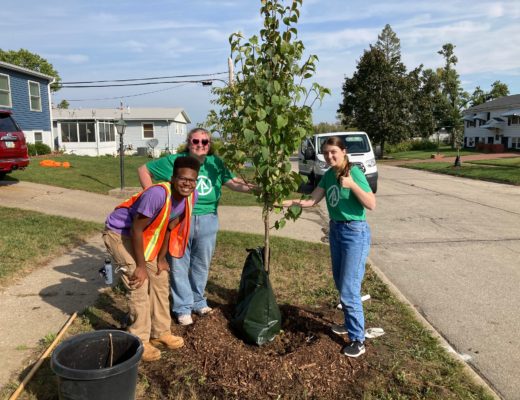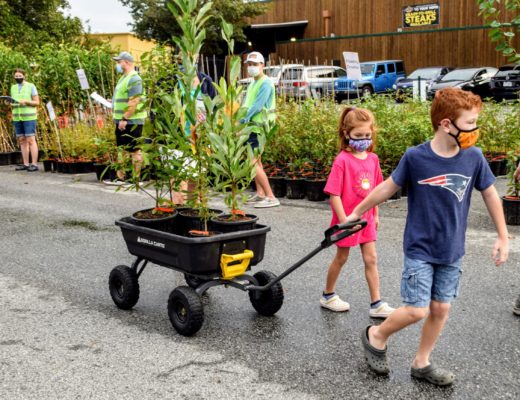This story is from the March/April Arbor Day Foundation Newsletter. Sign up for the Arbor Day e-news to get more stories right to your inbox.
OCT. 10, 2018, WAS A TERRIFYING DAY for the residents of Florida’s Panhandle. It was midday when the full fury of Hurricane Michael struck with its 155 mph winds and a major surge of seawater from the Gulf of Mexico. In some areas, more than half the houses were flattened, and everywhere, beloved trees were leveled. Paul Schreiner, the owner of Panama City’s Texas Roadhouse restaurant, says, “The Panhandle of Florida has always been known for its breathtaking beaches. What some people may not be familiar with is the abundance and diversity of our heavily wooded cities, parks, and forests. Hurricane Michael not only destroyed homes, schools, and businesses, but by wiping out our trees, it also took from us the natural beauty we enjoyed daily.”
Within three months, staff from the Arbor Day Foundation along with partners from the Florida Forest Service, Verizon Communications, FedEx, International Paper, and Texas Roadhouse were on site in three Panhandle communities to provide free trees to the residents. The events took place, appropriately, on Florida’s Arbor Day. Large-caliper trees were planted on the campus of Florida State University — Panama City, and some 2,000 trees of native species were given to residents there and in Marianna and Panama City Beach.
Read The Journey to Recovery in the Wake of Hurricane Michael
“When we arrived, the level of devastation was absolutely sobering,” said Matt Spitsen, the Arbor Day Foundation’s program development manager. “We weren’t sure if these communities were ready to replant their lost trees, but after announcing the Arbor Day events, residents came out in droves. Hours before the event, homeowners began to line up, awaiting the trees they got to take home and plant in their yards to replace those that were lost.” Paul added, “It was the start of a new beginning. A living symbol of our future.”

Jim Karels, Florida’s state forester, said that the loss of tree cover has created negative economic and ecological consequences. “It is imperative for us to help our communities restore their forest resources that directly impact property values, tourism, stormwater runoff, energy conservation, and air quality,” he said.
Dan Lambe, president of the Arbor Day Foundation, attended all the events and assured those present, “We are committed to restoring tree cover in communities devastated by Hurricane Michael. These trees will bring hope and healing. And what better day to plant trees than on Arbor Day?” The Arbor Day Foundation’s Community Tree Recovery program began in 2005 due to the great need for trees along the Gulf Coast following Hurricane Katrina. Upon invitation by local authorities, the Arbor Day Foundation launches a recovery campaign to help people heal after major storms, wildfires, floods, and insect or disease epidemics.
Read Marriott International Guests Support the Planting of More Than 100,000 Trees
To date, more than 5 million trees have been distributed through this program — 240,000 of them in Florida.
For more information about this important program and how you can help, please visit arborday.org/recovery.





I live in Canton GA. We have many massive trees that are being killed by english ivy. I have cut vines on several trees but some of the vines are so thick you need power equipment. I have called my county arborist and other county and city officials about this problem but to no avail. Planting new trees is great but I think keeping the existing trees is important also. Any suggestions on how I can get some action on this problem
Hi Thomas,
We’re sorry to hear what is happening to your trees. You have taken all the right steps in talking with your local officials, they are the best points of contact in handling local matters. Chances are the city has a tree ordinance, you may dig it up to learn what the city’s responsibilities are for public trees and how they maintain or remove them. Hopefully you get the answers you are looking for.